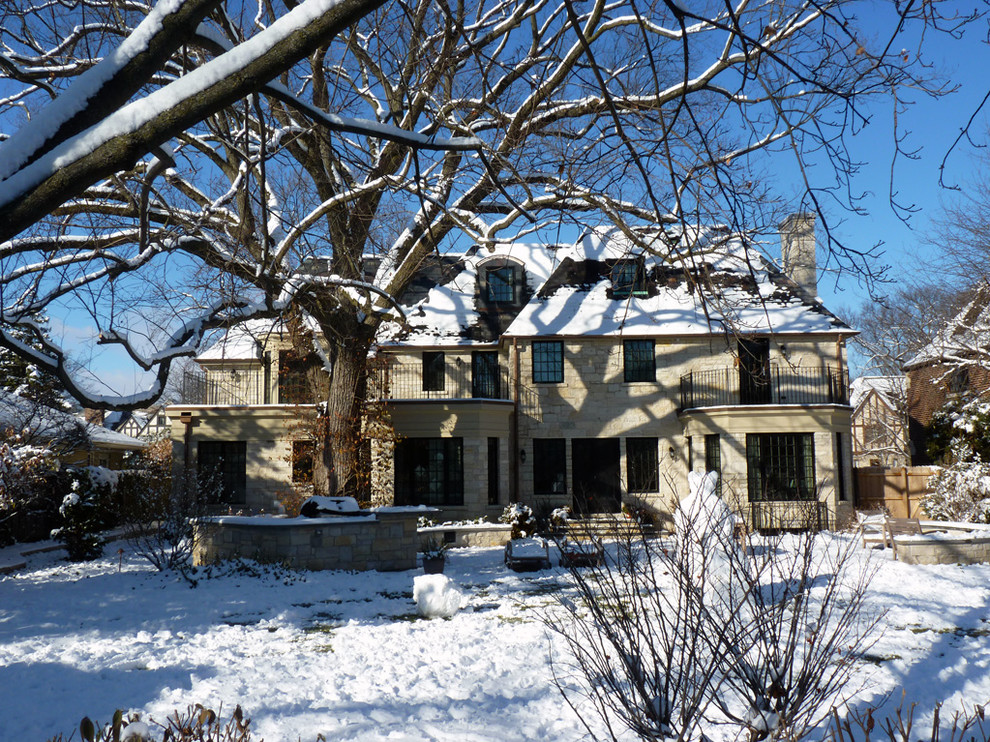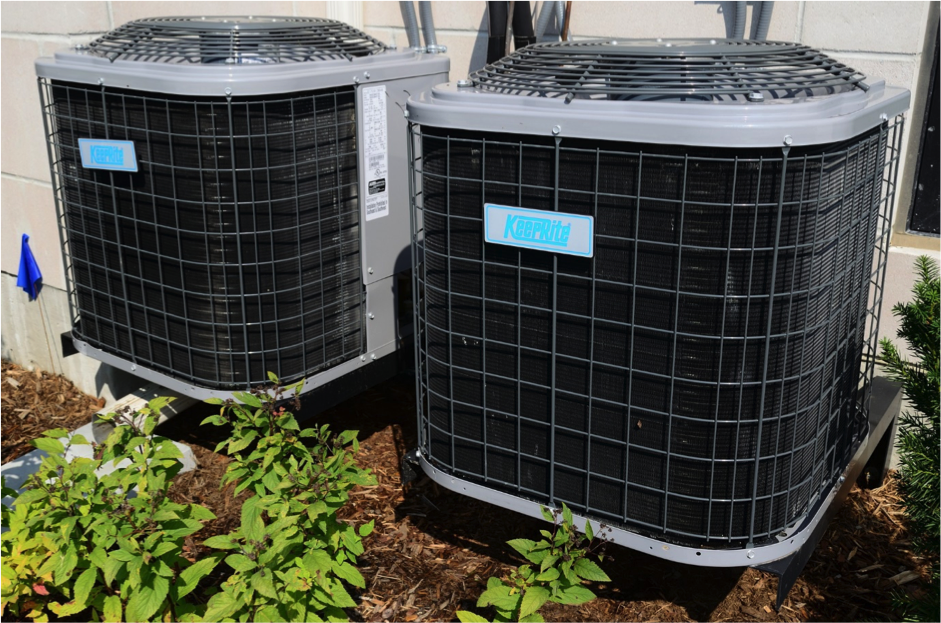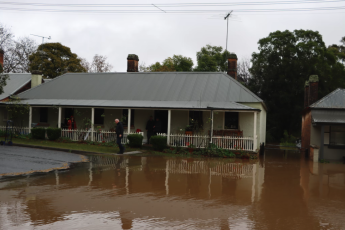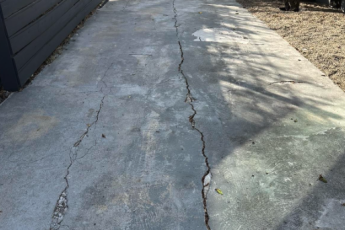Ways to Improve Your Home’s Exterior Before the Cold Weather Strikes

With colder months approaching, preparing your home’s exterior for winter is crucial!

Harsh weather can cause damage, leading to expensive repairs if not addressed early. Simple improvements, like roof inspections and sealing windows, can protect your home.
By taking proactive steps now, you’ll enhance energy efficiency, prevent issues, and improve curb appeal. In this article, we’ll outline practical tips to ensure your home is well-prepared for winter, so you can enjoy the season worry-free.
1. Inspect and Repair the Roof
Inspecting and repairing your roof before winter is essential to prevent leaks and ice damage. Begin by checking for missing or damaged shingles, as they can allow water to enter.
Forbes reports that a basic visual roof inspection generally costs between $200 and $300. More advanced methods, such as drone or thermal imaging inspections, typically range from $500 to $600.
Ensure gutters and downspouts are clear to promote proper drainage and avoid ice dams. If your roof shows wear, hiring a professional inspector is critical to uncover hidden issues and prevent moisture damage. Addressing roof issues early reduces the risk of costly repairs when winter hits.
Is it better to hire a professional for roof inspections?
While you can perform a basic visual check, hiring a professional for a roof inspection ensures a thorough and accurate assessment. You can spot visible issues like missing shingles, professionals can identify hidden problems, ensuring a comprehensive inspection. They can detect leaks or weak areas that might be missed otherwise, saving you future repair costs.
2. Seal Windows and Doors for Better Insulation
Sealing windows and doors is a simple yet effective way to improve insulation and energy efficiency before winter.
According to ENERGY STAR, air leaks waste energy and increase utility costs, leading to higher heating bills and uncomfortable indoor conditions. The EPA estimates that homeowners can save about 15% on heating and cooling costs by sealing leaks and adding insulation.
Check seals around windows and doors, applying caulk or weatherstripping to close gaps, particularly in older, deteriorated installations. Properly sealed openings retain heat, lower energy usage, and improve comfort, making them a wise investment in energy savings.
3. Upgrade Exterior Lighting for Shorter Days
As winter brings shorter days, upgrading your exterior lighting is vital for safety and security. LED lights are a good swap.
Energy.gov states that lighting accounts for 15% of electricity, with LED upgrades saving households around $225 annually. LED bulbs consume 90% less energy and have a lifespan of 25 times longer than traditional incandescent bulbs, making them highly efficient and cost-effective.
Consider installing motion-sensor lights to automatically brighten dark areas and enhance security by deterring potential intruders. Incorporate timers and dimmers to maximize savings, especially for outdoor fixtures with ENERGY STAR-qualified products. This exterior upgrade improves curb appeal, boosts visibility, and increases safety, ensuring your property stays secure during winter.
4. Exterior Painting to Protect and Beautify Your Home
A high-quality paint job safeguards your home against UV radiation, moisture, and temperature changes, which helps prevent issues like rot, mold, and other damage. Selecting the appropriate weather-resistant paint can also prolong the durability of your surfaces, ultimately saving you both time and money over time.
Fall’s cooler temperatures and lower humidity create ideal conditions for exterior painting, ensuring proper paint curing and a smooth finish. It’s essential to complete this work before winter arrives, particularly in areas like Shoreline, WA, where the cold season can be harsh.
According to WeatherSpark, the cool season in Shoreline, WA, lasts for 3.5 months, from November 12 to February 28. During this period, the typical daily maximum temperatures fall below 51°F. December is particularly chilly, with an average low of 38°F and a high of only 46°F. Therefore, tackling your exterior painting project in the fall will ensure that your home is well-protected before the winter weather sets in.
For a high-quality finish that endures the elements, consider hiring experienced painters in Shoreline for your painting needs. A professional painting service ensures a flawless application and offers valuable insights on color selection and suitable paint types.
According to EA Pro Painters, experts can assess surfaces and recommend repairs or priming for better paint adhesion and longevity. Experienced painters have the right tools and techniques to cover every architectural feature effectively.
How often should I repaint the exterior to maintain protection against harsh weather?
You should repaint the exterior every 5 to 10 years to maintain protection, depending on climate and paint quality. Homes in extreme weather conditions may require more frequent repainting. This helps maintain your home’s defense against harsh weather, protecting it from moisture, peeling, and deterioration.
5. Reinforce Driveways and Walkways
Winter storms had a significant financial impact in 2022, with insured losses reaching almost $6 billion, as reported by the Insurance Information Institute. December alone accounted for $3.5 billion in damages, making it the third most expensive winter event on record since 1950.
This highlights the importance of reinforcing driveways and walkways to protect against severe winter weather, reducing the risk of costly repairs from storm-related damage.
Prevent cracks by sealing visible damage to stop water from seeping in and freezing, which could worsen the issue. For driveways prone to icing, applying weather-resistant coatings or anti-slip materials enhances safety.
Routine maintenance, like clearing debris and using de-icing agents, ensures safer, longer-lasting surfaces throughout the cold season.
6. Landscaping for Winter Preparation
Winterizing your landscape helps protect plants and outdoor features from harsh conditions. Prune trees and shrubs to prevent snow damage, and apply mulch around plant bases to insulate the roots. Store hoses and garden tools properly to avoid damage from freezing.
Cover delicate plants with fabric or burlap to protect them from harsh winds. Implementing these protective measures will help your garden withstand winter conditions, keeping it healthy and vibrant for the arrival of spring.
What measures should I implement to prepare my irrigation system and gardening tools for winter?
To winterize your irrigation system, drain any water to prevent freezing, insulate exposed components, and turn off the water supply. Clean garden tools, dry them thoroughly, and apply rust-preventing oil to metal parts before storing them in a dry place. This ensures your equipment stays functional.
Winterizing Your Home
Preparing your home’s exterior for winter ensures protection, efficiency, and safety during the colder months. By inspecting and repairing the roof, sealing windows, upgrading lighting, and reinforcing driveways, you safeguard your home from damage and energy loss.
Taking time to prepare your landscaping and winterize outdoor systems also helps protect your property. These simple improvements provide peace of mind during winter and reduce the risk of costly repairs. Implementing these measures will keep your home in top shape, ready to face winter’s challenges and emerge unscathed when spring arrives.








